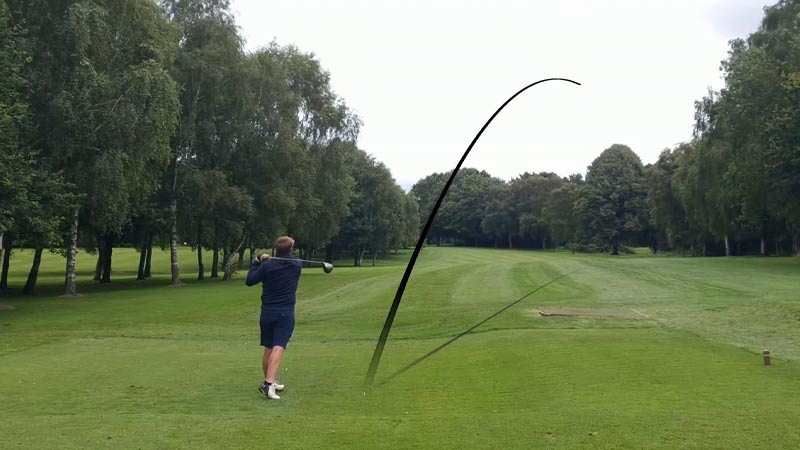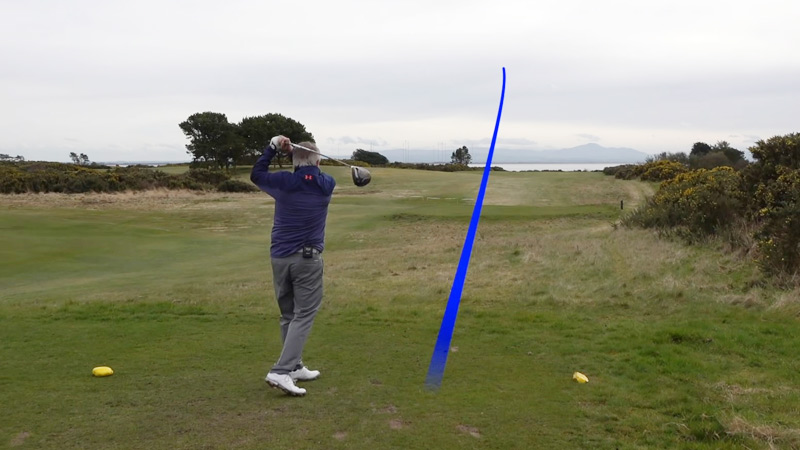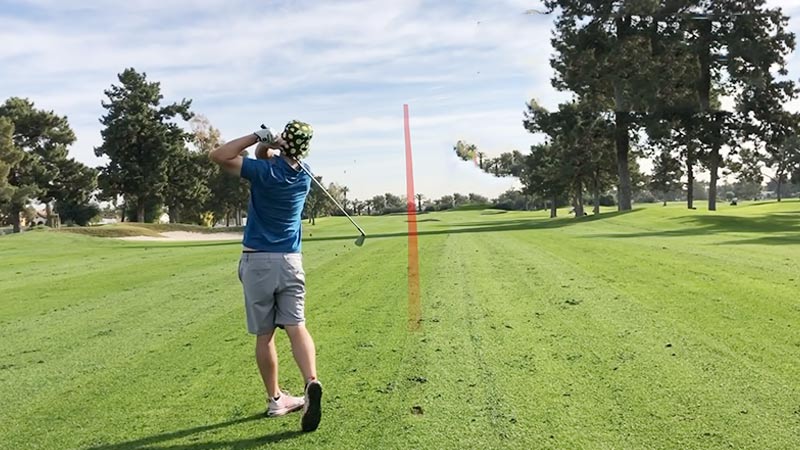In the realm of golf, a 12 handicap holds a distinct significance. It represents a golfer of moderate skill, one who is adept at navigating the challenges of the course yet remains on a continuous journey toward improvement.
This handicap implies an ability to shoot approximately 12 strokes above par during an 18-hole round, reflecting a balance between proficiency and room for growth.
As we delve into what a 12 handicap entails in the world of golf, we gain insight into the golfer’s competence and how this number plays a pivotal role in competitive play, goal-setting, and the enduring pursuit of excellence on the fairways.
What Is A 12 Handicap In Golf?
A 12 handicap in golf is a numerical representation of a golfer’s skill level and ability. It is a commonly used system to help level the playing field when golfers of different skill levels compete against each other. In essence, a 12 handicap indicates that the golfer typically shoots 12 strokes over par for an 18-hole round.
Here’s a breakdown of what a 12 handicap means in golf:
Scoring
A golfer with a 12 handicap is expected to shoot, on average, 12 strokes over par for an 18-hole round. Par is the standard score that an expert golfer is expected to achieve on each hole, and it varies from hole to hole and course to course.
So, if the course’s par is 72, a golfer with a 12 handicap is expected to complete the round in around 84 strokes (72 par + 12 over).
Skill Level
A 12 handicap suggests that the golfer has some proficiency in the game but still has room for improvement. It is considered a mid-range handicap.
Golfers with a 12 handicap are likely to have a good understanding of the game’s fundamentals, including swing mechanics, course management, and putting techniques.
Competitive Play
In many competitive golf events, players with different handicaps compete against each other. Handicaps are used to adjust scores so that players of varying abilities can compete on an even footing.
In this context, a golfer with a 12 handicap will receive strokes to help level the playing field when playing against golfers with lower handicaps.
Improvement Goals
Golfers often set handicap goals as a way to track their progress and improvement in the game. Lowering one’s handicap is a common goal for golfers, and achieving a lower handicap indicates an improved level of play.
Handicap System
Handicaps are calculated using a standardized system, typically based on the golfer’s recent scores and the difficulty rating of the golf courses they’ve played.
The goal of the handicap system is to provide a fair and equitable way for golfers of different skill levels to compete with each other.
Is 12 a Good Handicap in Golf?

A handicap of 12 in golf is generally considered to be a good handicap for most amateur golfers. It signifies a golfer who has developed a solid level of skill and is capable of consistently shooting scores that are 12 strokes over par for an 18-hole round.
However, whether a 12 handicap is considered “good” or not can depend on various factors, including the level of competition you are playing against and your personal goals.
Here are some considerations:
Amateur Golfers
For many amateur golfers, achieving a 12 handicap is a significant accomplishment. It indicates a reasonable level of proficiency and dedication to the game. Most recreational golfers don’t reach this level of skill.
Competitive Play
In casual or social rounds of golf, a 12 handicap can make you a competitive player. You would be able to hold your own and enjoy the game while occasionally playing better than your handicap.
Tournament Golf
If you aspire to compete in local golf tournaments or club events, a 12 handicap can be competitive, especially in net competitions where handicaps are used to level the playing field.
However, the level of competition can vary widely, and in more competitive tournaments, golfers with single-digit handicaps might dominate.
Personal Goals
Whether a 12 handicap is considered “good” can also depend on your personal goals. If you are consistently working to improve your game and lower your handicap, achieving a 12 might be a milestone on your journey to becoming a better golfer.
Course Difficulty
Keep in mind that golf courses vary in difficulty. Some courses are easier to score well on, while others are more challenging. Your handicap may perform differently on different courses.
What Score Does a 12 Handicap Shoot?
A golfer with a handicap of 12 is expected to shoot, on average, approximately 12 strokes over par for an 18-hole round. The exact score can vary depending on the difficulty of the golf course, the golfer’s current form, and other factors.
However, if we assume that the golf course has a par of 72, a golfer with a 12 handicap would aim to complete the round in around 84 strokes (72 par + 12 over).
It’s important to note that golf handicaps are not a guarantee of a specific score in any given round. Instead, they represent a golfer’s average performance over a series of rounds, factoring in their best and worst scores.
On any given day, a golfer with a 12 handicap might shoot better or worse than their handicap, but over time, their scores should average out to approximately 12 strokes over par.
What Percentage of Golfers Have a 12 Handicap?

The distribution of golf handicaps can vary depending on the region, the specific golf course or club, and the level of competition. However, in general, having a handicap of 12 or better puts a golfer in a relatively skilled category among amateur golfers.
According to statistics from the United States Golf Association (USGA) and other golf associations, a significant percentage of golfers typically have handicaps that are higher than 12. Here’s a rough breakdown of golfers by handicap range:
- High Handicaps (20+): A significant portion of recreational golfers may have handicaps in the 20+ range. These golfers are still learning the game and working on improving their skills.
- Mid-Range Handicaps (10-19): Golfers with handicaps in the 10 to 19 range are often considered intermediate players who have developed a moderate level of proficiency.
- Low Handicaps (0-9): Golfers with single-digit handicaps (0-9) are considered skilled players who have a high level of competence in the game.
- Single-Digit Handicaps (1-9): Among those with single-digit handicaps, those closer to 1 or 2 are typically very skilled and competitive golfers who regularly break par or shoot close to it.
- Scratch Golfers (0 Handicap): A golfer with a handicap of 0 is considered a scratch golfer. This means they typically shoot par or better.
How to Calculate Your Golf Handicap?
Calculating your golf handicap involves several steps and requires the use of golf scorecards, course rating, and slope rating information provided by the golf course or golf association. Here’s a step-by-step guide on how to calculate your golf handicap:
Keep Scorecards
After each round of golf, make sure to keep scorecards or record your scores in a digital scorekeeping app. You’ll need these scores to calculate your handicap.
Determine Your Handicap Differential
- Calculate your Adjusted Gross Score (AGS) for each round. This is your actual score for the round adjusted for handicap purposes.
- To calculate your AGS, you need to know the Course Rating and Slope Rating of the golf course you played on. These ratings are typically provided on the scorecard or by the golf course.
- Subtract the Course Rating from your actual score. For example, if you shot 90 on a course with a Course Rating of 72, your AGS for that round is 90 – 72 = 18.
- Multiply the AGS by 113 (a standard Slope Rating used for handicap calculations) and then divide the result by the Slope Rating of the course you played on. So, if the Slope Rating for that course is 125, you’d calculate (18 x 113) / 125 = 16.24 (rounded to the nearest tenth).
Use the Handicap Index Formula
- To calculate your Handicap Index, you’ll need to use the average of the lowest differentials. Typically, you should use the lowest 10 out of the most recent 20 AGS differentials.
- Add up the differentials of your lowest 10 AGS scores and divide the total by 10. This gives you your average differential.
Apply the Handicap Index Formula
After you have your average differential, you’ll apply the Handicap Index formula, which is (Average Differential x 0.96). This adjusts your average differential to account for the number of scores used (10 out of 20) and some other factors.
Round Your Handicap Index
Round your Handicap Index to the nearest tenth. For example, if your calculated Handicap Index is 10.5, round it to 10.6.
Update Your Handicap
Your Handicap Index should be updated regularly, usually every two weeks or at the interval determined by your golf association. You’ll use your most recent scores to calculate your updated Handicap Index.
What Handicap is a 95 Golfer?

To determine the handicap of a golfer who consistently shoots 95, you would need to calculate their Handicap Index using the formula and process I described earlier. Here’s a brief overview of how it’s done:
- Keep Scorecards: Record your scores for multiple rounds of golf.
- Calculate Adjusted Gross Score (AGS): For each round, calculate the Adjusted Gross Score (AGS) by subtracting the Course Rating from your actual score for that round. Course Rating is typically provided by the golf course on the scorecard.
- Calculate Handicap Differentials: For each round, calculate the Handicap Differential by multiplying the AGS by 113 (a standard Slope Rating used for handicap calculations) and then dividing the result by the Slope Rating of the course you played.
- Select Lowest Differentials: Take the lowest differentials from your recent rounds, usually the lowest 10 out of the most recent 20.
- Calculate Average Differential: Add up the selected differentials and divide by the number of differentials used (10 in this case) to get the average differential.
- Apply Handicap Index Formula: Multiply the average differential by 0.96 to get the Handicap Index.
What’s a good handicap for a beginner?
For a beginner golfer, a good handicap is typically higher, reflecting their initial level of skill and experience in the game. A higher handicap allows beginners some flexibility as they learn and improve their golfing abilities.
Here’s a general guideline for what might be considered a good handicap for a beginner:
High Handicap (20+)
A beginner golfer often starts with a handicap in the 20+ range. This means they are typically shooting 20 or more strokes over par for an 18-hole round. This is completely normal for someone who is new to golf and still developing their skills.
Improvement Over Time:
As beginner golfer gains more experience, takes lessons, practices regularly, and plays more rounds, their handicap should gradually decrease. The goal is to consistently improve and move toward a lower handicap.
Intermediate Level (10-19)
Many beginner golfers aim to progress to an intermediate level, which corresponds to a handicap in the 10-19 range. This signifies a golfer who has developed a moderate level of proficiency and can enjoy the game with a reasonable degree of skill.
Single-Digit Handicap (0-9)
Achieving a single-digit handicap is a significant milestone in golf and indicates a high level of competence. However, it often takes years of dedication and practice to reach this level.
What handicap is an 85 golfer?

To determine the handicap of a golfer who consistently shoots 85, you would need to calculate their Handicap Index using the standard handicap calculation process. Here’s a simplified version of how it’s done:
- Keep Scorecards: Record your scores for multiple rounds of golf.
- Calculate Adjusted Gross Score (AGS): For each round, calculate the Adjusted Gross Score (AGS) by subtracting the Course Rating from your actual score for that round. Course Rating is typically provided by the golf course on the scorecard.
- Calculate Handicap Differentials: For each round, calculate the Handicap Differential by multiplying the AGS by 113 (a standard Slope Rating used for handicap calculations) and then dividing the result by the Slope Rating of the course you played on.
- Select Lowest Differentials: Take the lowest differentials from your recent rounds, usually the lowest 10 out of the most recent 20.
- Calculate Average Differential: Add up the selected differentials and divide by the number of differentials used (10 in this case) to get the average differential.
- Apply Handicap Index Formula: Multiply the average differential by 0.96 to get the Handicap Index.
Frequently Asked Questions
Is a 13 handicap good?
The handicap you possess is not nearly as important as your ability to practice. If you are able to hit the ball in all areas of the golf course, then go for it. However, if your only focus is on one area and don’t have a lot of other skillsets going for you, your handicap may not be that much of a factor.
Can I get a golf handicap right away as a beginner golfer?
No, you need to establish a golf handicap by playing several rounds and recording your scores over time. Most golf associations require a minimum of five to ten scores to calculate an initial handicap.
How often should I update my handicap?
Handicaps should be updated regularly, usually every two weeks or at the interval determined by your golf association. This ensures that your handicap reflects your current skill level.
Can I have a negative handicap?
No, golf handicaps are not negative. They represent how many strokes over par you are expected to shoot on average. However, a lower positive handicap indicates a higher level of skill.
What is a course handicap, and how is it different from a Handicap Index?
A Course Handicap is a golfer’s Handicap Index adjusted for a specific golf course. It considers the Course Rating and Slope Rating of the course to provide a more accurate representation of how many strokes you should receive or give in a match.
To Recap
Golf handicaps play a crucial role in leveling the playing field for golfers of varying skill levels. They are a numerical representation of a golfer’s ability, indicating how many strokes they are expected to shoot over par on average.
A 12 handicap signifies a moderate level of proficiency, while beginners may start with higher handicaps and aim to improve over time. The process of calculating and maintaining a handicap involves recording scores, adjusting for course difficulty, and using standardized formulas.
Ultimately, whether a handicap is considered “good” depends on individual goals and the level of competition. Golf is a game that can be enjoyed at any skill level, and the journey to improvement is part of its allure.







